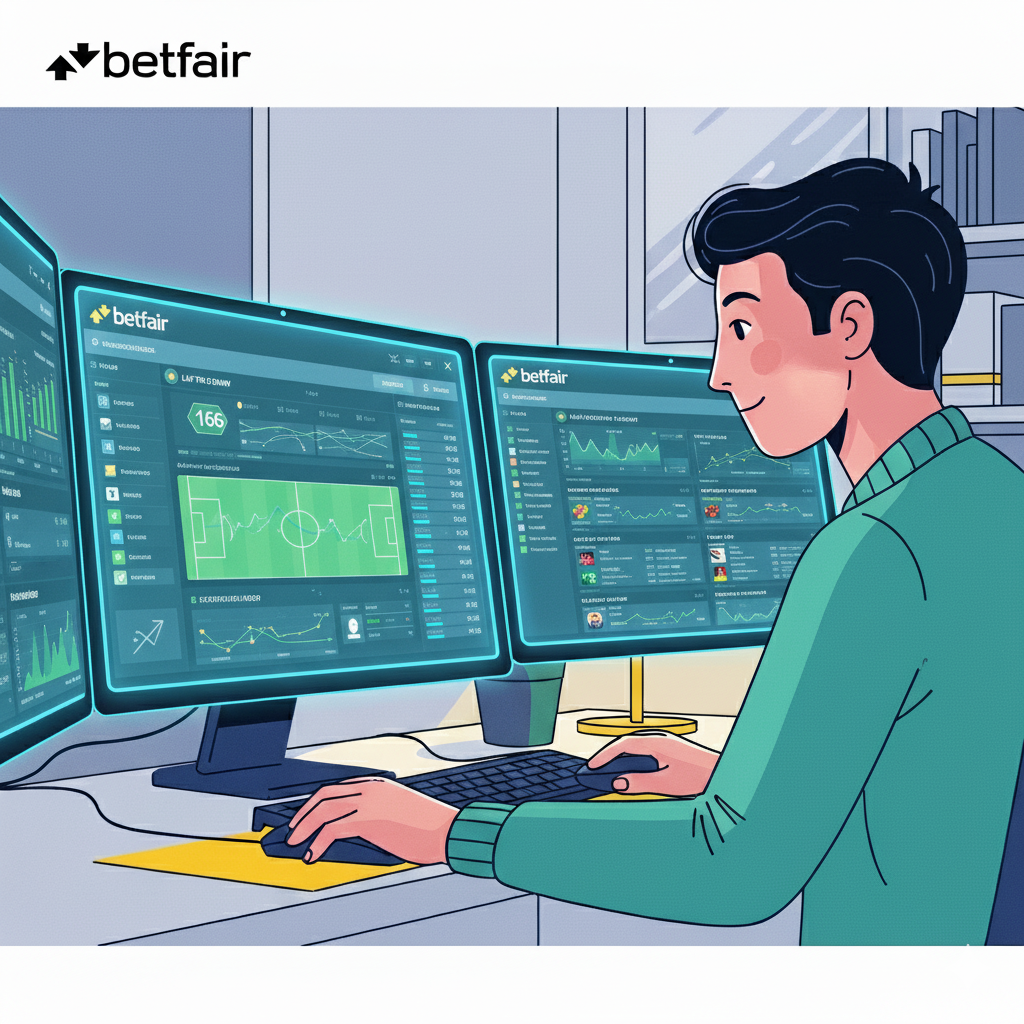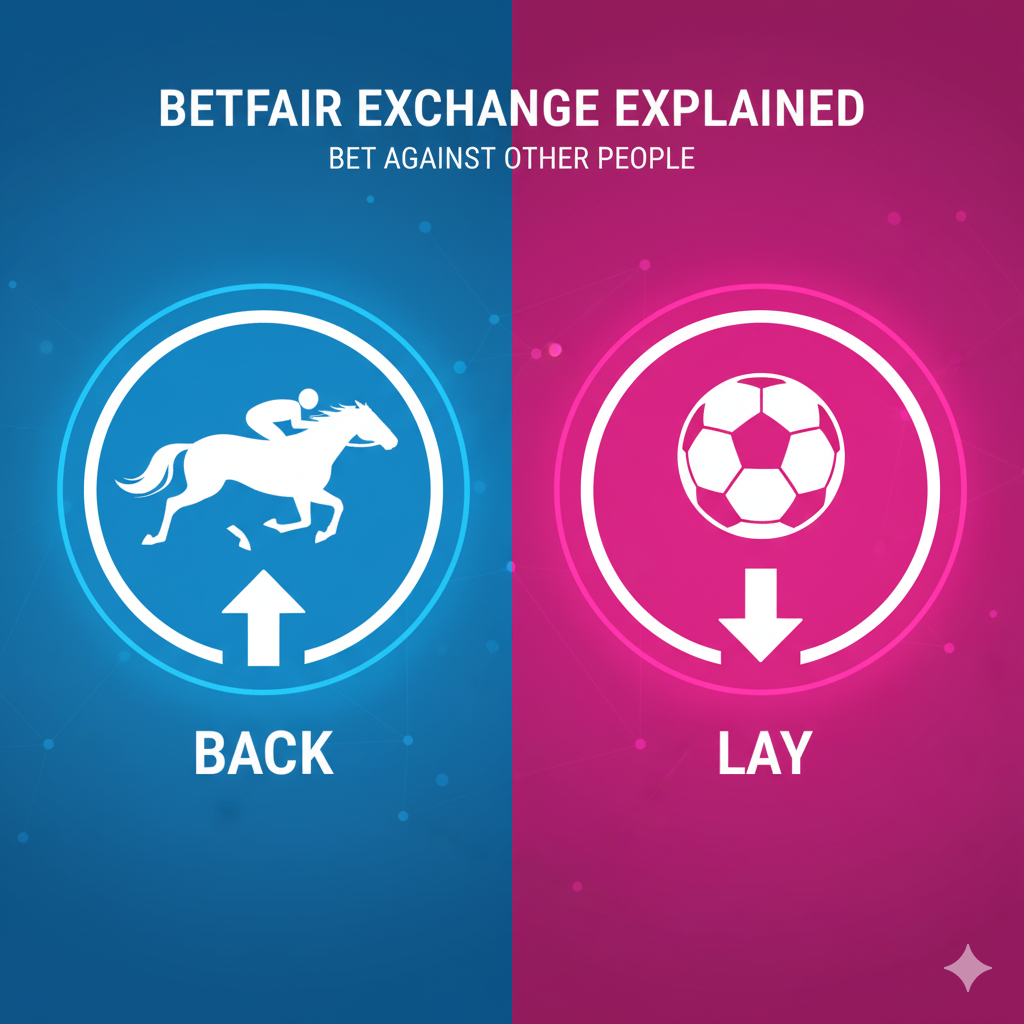In the exhilarating world of sports trading, few strategies have captivated the imagination of football enthusiasts and seasoned traders alike quite like “Lay the Draw.” This seemingly simple yet deeply nuanced approach to in-play betting on exchanges like Betfair has become a cornerstone for many seeking to extract consistent profits from the beautiful game. Unlike traditional gambling, where you predict an outcome and wait, Lay the Draw empowers you to actively trade market movements, profiting whether a goal is scored or not, as long as the odds move in your favor.
This comprehensive guide will demystify the Lay the Draw strategy, breaking it down into actionable steps, revealing crucial selection criteria, and equipping you with the knowledge and tools to implement it successfully. Whether you’re a novice looking to dip your toes into football trading or an experienced punter aiming to refine your approach, mastering Lay the Draw could be your gateway to a more strategic and potentially profitable engagement with football.

Understanding the Core Concept: What is “Lay the Draw”?
At its heart, Lay the Draw (LTD) is an in-play football trading strategy where you bet against the draw occurring. On a betting exchange, “laying” an outcome means you are essentially playing the role of a bookmaker – you are accepting bets from others who believe the match will end in a draw. If the match does not end in a draw, you win. If it does, you lose.
The fundamental premise relies on the market’s reaction to a goal being scored. Before a match starts, or during the early stages when the score is 0-0, the odds for the draw will be relatively low. As soon as either team scores a goal, the scoreline changes (e.g., to 1-0 or 0-1), and the probability of a draw significantly decreases. Consequently, the odds for the draw to happen will increase dramatically. This increase in odds is your profit window. You lay the draw at lower odds and then “back” the draw at higher odds after a goal is scored, locking in a profit. This technique is known as “greening up” or “hedging.”
Example:
- Pre-match/Early In-play (0-0 score): You Lay the Draw at odds of 3.20 for £100.
- Your potential profit if the match doesn’t end in a draw is £100.
- Your potential liability (what you’d lose if it does end in a draw) is £220 (odds – 1 * stake).
- A Goal is Scored (e.g., 1-0): The odds for the draw instantly rise, perhaps to 7.00.
- You “Green Up”: You now Back the Draw at odds of 7.00 for a smaller stake (e.g., £45.71).
- This action balances your position, ensuring a profit regardless of the final outcome. Your initial lay bet profits from no draw, and your new back bet reduces your liability on the draw while guaranteeing an overall gain.
The skill lies in selecting the right matches and executing the trade efficiently.

Step-by-Step Guide to Implementing Lay the Draw
Implementing the Lay the Draw strategy successfully requires discipline, careful selection, and rapid execution.
Step 1: Match Selection Criteria
This is the most critical step. Blindly applying LTD to any match is a recipe for disaster. Your goal is to identify matches with a high probability of a goal being scored, particularly by a strong favorite, and where the market is liquid enough to trade efficiently.
Competition Type:
- Prioritize: Top-tier leagues with high scoring potential and generally stronger teams (e.g., English Premier League, Spanish La Liga, German Bundesliga, Italian Serie A, Dutch Eredivisie). These leagues typically have higher liquidity.
- Avoid: Lower leagues, cup competitions (especially early rounds), and international friendlies. These often have unpredictable results, lower liquidity, and teams playing defensively.
- Link to Football Stats: For competition data and league standings, check official league websites or reputable sports data sites like WhoScored: https://www.whoscored.com or FBref: https://fbref.com/en/
Team Strength & Form:
- Home Favorite: Look for matches where a strong home team is playing against a weaker, but not entirely defenseless, away team. A strong home favorite is more likely to score, thus breaking the 0-0 deadlock and causing the draw odds to rise.
- Attacking Prowess: Focus on teams known for their attacking style, who create many chances and have a good goal-scoring record.
- Defensive Vulnerability (Away Team): The away team should ideally not be an impenetrable defensive unit. If they are too strong defensively, a 0-0 scoreline might persist.
- Recent Form: Check the recent form of both teams. Are they scoring freely? Are they conceding goals? Are they involved in many draws? Avoid teams that frequently draw (e.g., 0-0, 1-1).
- Head-to-Head: Look at historical results between the two teams. Do their matches often feature goals?
- Team Stats Link: WhoScored: https://www.whoscored.com provides detailed team and player statistics, including average goals scored/conceded, possession, shots on target, and form guides. Another excellent resource is Soccerway: https://uk.soccerway.com/ for results, fixtures, and head-to-head data.
Odds for the Draw:
- Ideal Range: Aim for draw odds between 3.00 and 4.00 (or up to 4.50 in some cases).
- Why this range?
- If the draw odds are too low (e.g., below 3.00), the favorite is very strong, and the market might already be anticipating a goal very quickly. The price movement might be minimal, and the liability on the draw is higher.
- If the draw odds are too high (e.g., above 4.50), the match is likely perceived as very close, or both teams are defensively strong, increasing the risk of a 0-0 draw or a very late goal, which could lead to losses.
- Note: These are general guidelines; market dynamics can vary.
Minimum Trading Volume (Liquidity) on Betfair:
- Crucial for Execution: This is paramount for any in-play trading strategy. You need a highly liquid market to ensure your lay and back bets are matched instantly, allowing you to enter and exit trades at desired prices without “slippage” (getting a worse price than expected).
- Recommended Volume: For major football matches in top leagues, aim for at least £50,000 to £100,000+ already matched in the “Match Odds” market, ideally within the first 10-15 minutes of the match. For less popular matches, a few thousand pounds might suffice if you are using smaller stakes, but the risk of unmatched bets increases significantly.
- Where to check: On the Betfair Exchange website, you can see the “Matched” volume directly above the odds grid for each market.
Step 2: In-Play Execution (The First 10-20 Minutes)
Once the match starts, your pre-match analysis guides your in-play decisions.
- Monitor Live: It is absolutely essential to watch the match live, either via a TV broadcast or a live stream provided by Betfair or another reputable source. Relying on slow data feeds or text commentary will put you at a severe disadvantage due to market delays.
- Entry Point: Place your Lay the Draw bet as early as possible after kick-off, usually within the first 5-10 minutes, assuming the score is still 0-0 and no immediate goal looks imminent. The odds will be at their lowest at this point (assuming no early goals).
- Stake Size: Begin with small stakes until you are confident in your execution and selection process. Risk management is key.
- Expected Goal Time: If a goal is scored within the first 10-20 minutes, great! The draw odds will rise dramatically.
- Exit Strategy (Greening Up): As soon as a goal is scored (e.g., 1-0 or 0-1), immediately Back the Draw at the new, higher odds. Your trading software (see Step 4) will calculate the exact stake needed to “green up” and lock in an equal profit across all outcomes.
- Cutting Losses (No Goal): If no goal is scored by the 20-30 minute mark, the draw odds will have only slightly increased. This is a common stop-loss point for many traders. You would then Back the Draw to minimize your loss, accepting that this particular trade didn’t play out as expected. The longer the match remains 0-0, the lower your profit potential and the higher your risk of a prolonged loss or the match ending in a draw. Some traders exit at 0-0 if the favored team isn’t creating chances.
Step 3: Advanced Considerations and Risk Management
- The “Slow Game” Problem: If the match remains 0-0 for a long time (e.g., beyond 30-40 minutes), the odds on the draw will eventually start to decrease again as time runs out. Your initial lay bet will go into a losing position if you don’t exit. This highlights the importance of an early stop-loss.
- Goals Change Everything: While a goal is usually good, remember that a goal for the away team, especially if they are weaker, can still lead to the market overreacting. Stay alert.
- Red Cards: A red card drastically alters the game. If the team you expect to score gets a red card, their chances of scoring decrease, and your trade becomes riskier. You might need to exit for a loss. If the opposing team gets a red card, your position strengthens.
- Match Context: Always be aware of the importance of the match. A team playing for a draw might play more defensively, increasing the risk of a 0-0. Teams needing a win will be more attacking.
- Pitch Conditions: A waterlogged pitch or strong winds can affect scoring, making a 0-0 more likely.

Recommended Trading Bots and Sport Exchanges
To execute Lay the Draw effectively, especially for consistent trading, you absolutely need specialized software. The Betfair website interface is too slow for profitable in-play trading.
Betting Exchanges (where you trade):
- Betfair Exchange:https://www.betfair.com
- Why: Undisputedly the largest and most liquid betting exchange globally, offering the best prices and market depth for football trading. Most professional traders operate here.
- Location: Based in the UK, but operates globally (check local regulations).
- Smarkets:https://smarkets.com
- Why: A strong competitor to Betfair, offering lower commission rates and a user-friendly interface. While generally less liquid than Betfair, it’s a great alternative for many markets.
- Location: Based in the UK, available in various countries.
- Matchbook:https://www.matchbook.com
- Why: Known for its tight spreads and competitive commission structure. It also has good liquidity, particularly for major sports.
- Location: Based in Ireland, serving numerous international markets.
Trading Bots / Software (to connect to the exchanges):
These applications connect to the exchange’s API, providing advanced features like ladder interfaces, one-click betting, advanced charting, and automation.
- Bet Angel:https://www.betangel.com
- Features: Professional-grade software with extensive charting, ladder interface, advanced automation tools (e.g., for setting stop losses, greening up), and comprehensive customization. Essential for serious traders.
- Compatibility: Primarily Windows.
- Geeks Toy:https://www.geekstoy.com
- Features: Highly popular for its speed, reliability, and customizable interface. Offers a ladder view and robust charting. Excellent for rapid in-play trading.
- Compatibility: Primarily Windows.
- BF Bot Manager:https://www.bfbotmanager.com
- Features: Specialized in automation. Allows users to create complex betting “bots” based on specific rules (e.g., place a lay bet at kick-off, green up if a goal by X minutes, stop loss if no goal by Y minutes). Ideal for set-and-forget strategies once programmed.
- Compatibility: Primarily Windows.
Common Pitfalls to Avoid
- Chasing Losses: Never increase your stakes to recover previous losses. Stick to your predefined risk management plan.
- Emotional Trading: Fear and greed are the enemies of successful trading. Stick to your strategy and avoid impulsive decisions.
- Lack of Discipline: Deviating from your chosen match selection criteria or exit points will lead to inconsistent results.
- Ignoring Liquidity: Trying to trade in illiquid markets can leave your bets unmatched, trapping your money or forcing you to accept terrible prices.
- Slow Data Feeds: If your live stream or data feed is even a few seconds behind the market, you will consistently lose money as prices move before you can react.
- Over-reliance on Bots: While bots are powerful, they are only as good as the strategy they are programmed with. They don’t guarantee profits and still require monitoring.

Conclusion: The Art and Science of Lay the Draw
The Lay the Draw strategy is more than just betting against a tie; it’s a sophisticated approach to football trading that blends statistical analysis, real-time observation, and disciplined execution. While the markets have become more efficient over time, the core principles of LTD remain sound.
Success with Lay the Draw, particularly when integrated with trading bots, hinges on diligent pre-match research, a clear understanding of market dynamics, precise in-play execution via specialized software, and robust risk management. By carefully selecting matches with high goal probability, ensuring sufficient liquidity, and adhering to strict entry and exit rules, traders can leverage the predictable price movements that occur after a goal is scored.
Remember, consistent profitability in sports trading comes not from a single “magic bullet” strategy, but from a continuous process of learning, adaptation, and unwavering discipline. Master the art and science of Lay the Draw, and you’ll be well on your way to becoming a more strategic and successful football trader.

Betfair Bot Reviews: Which One Suits You Best?
Which Automated Betfair bot Trading Software is Right For You? Choosing the best Betfair bot in 2025 can be a…

The Ultimate Betfair Trading Guide: History, Strategies
Betfair trading is the secret that professional gamblers don’t want you to know. For decades, the game was rigged. You…

Backtesting Guides
Backtesting Guide — Principles & MarketBook Replay | BotBlog Backtesting guides Published: 2025-11-11 • BotBlog Backtesting Guide — Principles &…

Lesson 7 — Risk management & deployment
Skip to content Lesson 7 — Risk management, hedging & deployment Final crypto lesson: implement hedging/green‑up, enforce risk limits and…

Lesson 6 — Backtesting & simulation (Jupyter)
Skip to content Lesson 6 — Backtesting & simulation (Jupyter) Simulate strategies in Jupyter: load historical ticks/candles, replay data, simulate…

Lesson 5 — Webhooks & Pine alerts
Skip to content Lesson 5 — Webhooks & Pine alerts Build a secure webhook receiver for TradingView Pine alerts, validate…

Lesson 4 — Order placement & fills (testnet)
Skip to content Lesson 4 — Order placement & fills (testnet) Place limit and market orders on exchange testnets, handle…
